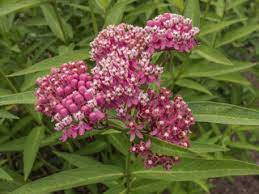Last Updated on August 16, 2023 by Real Men Sow
Swamp Milkweed (Asclepias incarnata) is an herbaceous perennial known for its beautiful features. This wildflower is also known as white Indian hemp, swamp milkweed, and rose-milkflower. Asclepias incarnata, like many other members of the genus, produces potent substances. Complex flowers with features similar to orchids set this genus apart.
Growing Conditions of Swamp Milkweed (Asclepias incarnata)
They thrive in wetland areas. The wild can be found in dense stands near swamps, bogs, and marshes, or along the banks and banks of streams and ditches. The taproot system is a fleshy, shallow-rooted organism that prefers loamy soil that has a high amount of organic matter content. This species does not like prolonged periods of dryness, so it is best to keep the soil moist. Although it can live in fields and roadsides, it will thrive near water sources.
Maximum growth requires full to partial sun, for at least 6 hours per day. The soil should be slightly acidic, but the plant can grow in a pH as high as 8.0 if all other conditions are right. It prefers temperatures between 65 and 75°F. It depends on insect pollination to fertilize its plants and disperses them via air.
How to Plant Swamp Milkweed (Asclepias incarnata)
This species can be purchased as plug plants from nurseries and planted by seed. Once the seeds have dried, they can be taken out and cracked open. The seeds should be kept in a paper bag for at least 2 weeks before being placed in a cool place for up to 12 hours. Keep the seeds in a paper bag for about 2 weeks before storing them in a cool area. A shallow tray for germination should be prepared with approximately 4 inches (10 cm) of the moist substrate. You can use a store-bought or sterilized peat-moss-based seedling mix.
Sowing
After the stratification period is completed, place the seeds on the soil surface. After the seeds are fully incorporated into the soil, gently push them into it. Seedlings will develop true leaves in 4-8 weeks if the soil moisture and temperature are maintained. When they are big enough to handle, you can transplant them into individual pots.
Planting Seedlings
Planting seedlings from purchased plug plants or established seedlings outdoors requires that there is minimal weed growth and adequate soil moisture. To allow maximum plant spread, plants should be spaced 18 inches (46cm) apart. After planting, water your seedlings lightly. Their roots might not be able to survive in damp soil until they reach 3 to 5 inches (7.6 to 12.7 cm).
General Care Guide for Swamp Milkweed (Asclepias incarnata)
This low-maintenance plant should not be planted next to high-competitive vegetation. However, swamp milkweed shoots will struggle to compete with high-density plants. It is slow growing and rarely produces flowers in its first year. You should also remove any weeds that could choke the crown of your plant.
- Growth habit: Many milkweed species are clump-forming. Common Milkweed is a single-stemmed variety.
- Staking: Milkweed plants are strong and can be staked without any effort.
- Watering: Swamp Milkweed varieties require either regular watering or a moist environment. Common and Whorled Milkweeds as well as Butterfly Weeds are best suited for dry environments.
- Fertilizing: Milkweed does not require fertilization. This native plant can thrive in soils that are poor.
- Mulching: If you want to control weeds, you can mulch milkweed with fine-chopped bark mulch or leaf litter. Mulch may not be appreciated by dry-soil milkweeds like Butterfly Weed.
- Trimming & Pruning: None needed.

